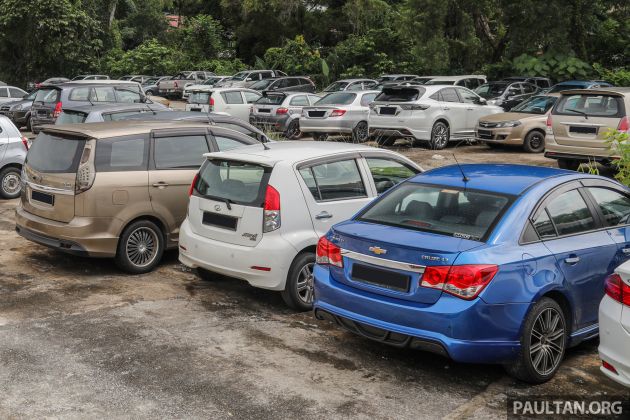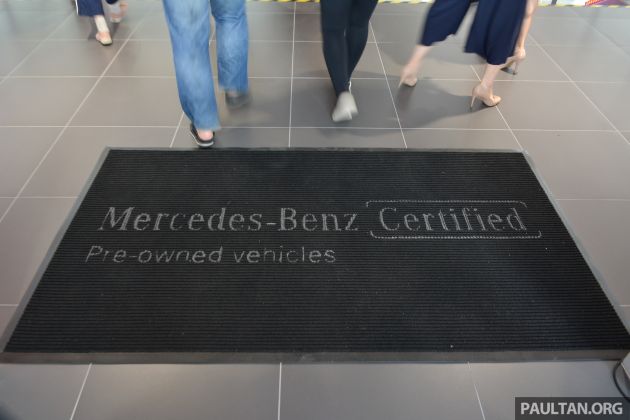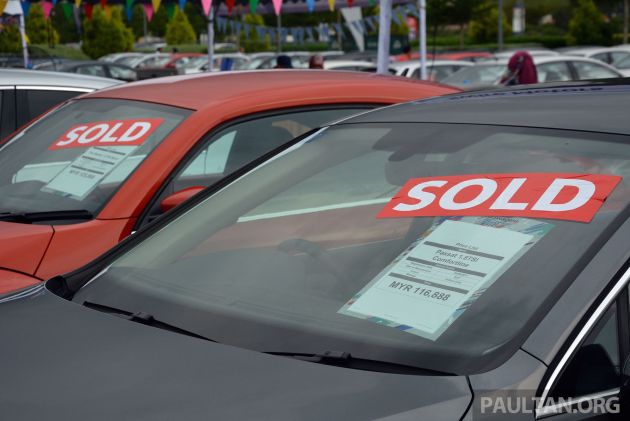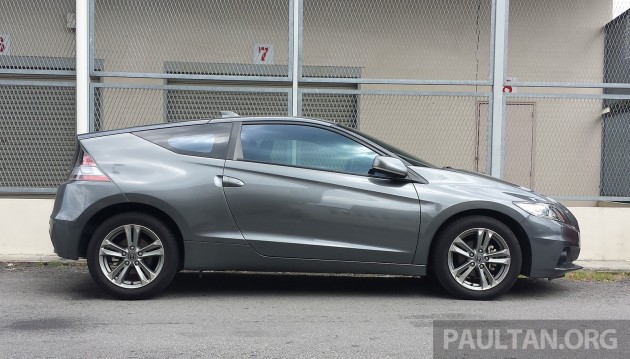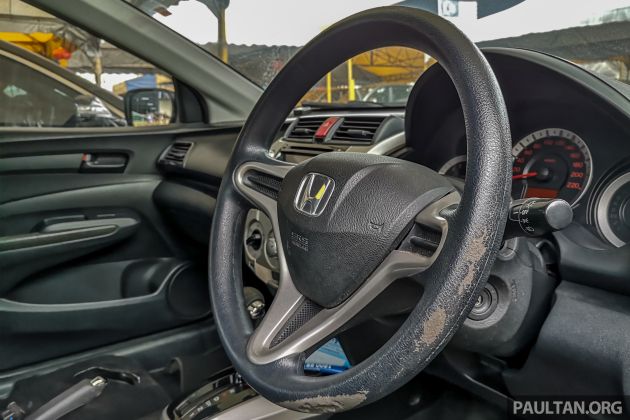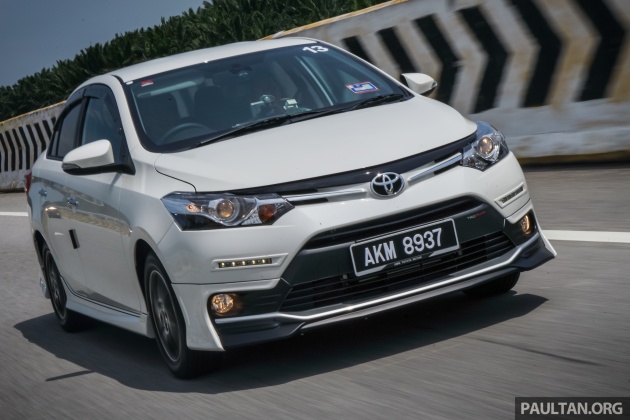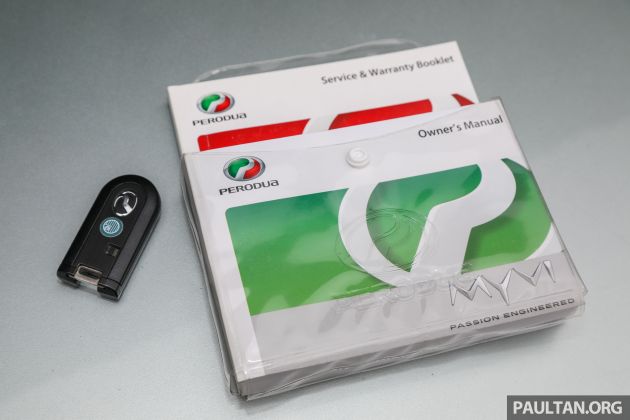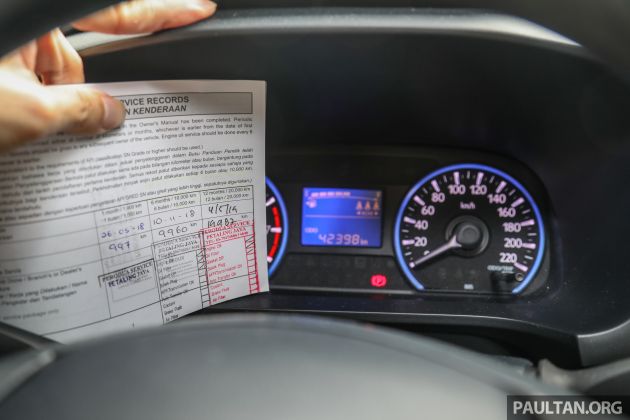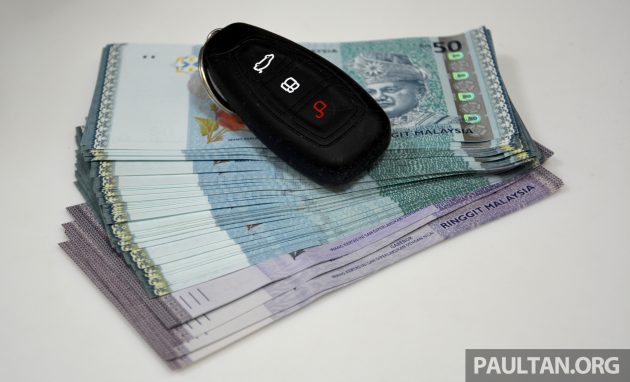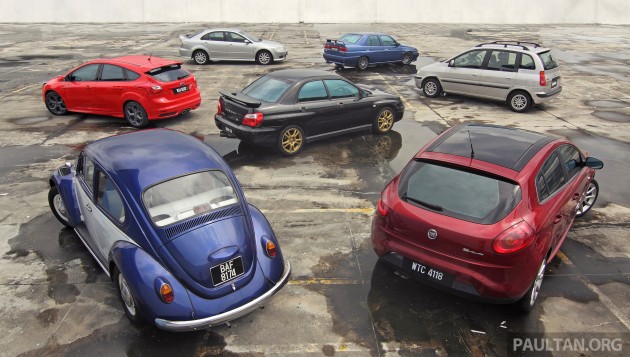Used cars. Not all of us end up buying one, but surely ALL of us have looked at one and went, hmmm…. before. Compared to what you can buy new for the same money, the used option is usually of a higher level – it could be more premium, more exotic or even the car you’ve been dreaming of all these years. Or all of the above.
There are deals to be had, but buying used is not straightforward when compared to the certainty of buying new. We always recommend buying new if your budget permits. Besides that factory fresh “new car smell” and feel that just can’t be replicated, new cars typically come with lower HP loan interest rates and crucially, a full warranty.
Now, “car guys” love the hands-on part of motoring, and hanging out at the workshops even. But for everybody else (the other 99 out of 100 people?), the bonnet is only ever opened by the technician at the service centre, where the car goes in twice a year. For most, the car is a tool, and the tool has to be reliable. There’s less likelihood of a major failure happening in a new car, and if your luck isn’t good, you’re covered by a warranty so there’s no extra outlay beyond the expected commitments.
Why Myvi when can BMW?
That’s a practical view, but the lure is strong. I know that first hand. After selling my reliable daily runner in March, I was in the market for a new ride. The unannounced arrival of Covid-19 helped narrow down the field by ruling out anything new/nearly new that even resembled luxury. A hardy, reliable newish car would be great for “wartime” and I eventually went for a newish Perodua Myvi under warranty, throwing away whatever little car guy credentials I had.
But the road to Myvi wasn’t easy. It never is when you’re into cars. Suddenly, “nicer” options surfaced on a daily basis, cars that appeal to the enthusiast in us. Thinking of a new Myvi AV? Why, when you can get a BMW 1 Series for RM50k. Never mind that it’s a base model and eight years old, it’s a BMW.
There are tonnes of “why not this instead” new versus used examples out there, and we fully understand if you go the used route. Just do so with your eyes open – that extra desirability comes at a price, and when it’s time to pay (both literally and figuratively), don’t complain, because you could have had a Perodua instead. Just saying.
Faced with this unexciting new car vs desirable used car dilemma, many have chosen the latter, but not all are happy with their decision. How do we know this? The Federation of Malaysian Consumers Associations (Fomca) has received a lot of complaints from consumers who are unsatisfied with their used car purchase, with many reporting issues that they either didn’t catch before or didn’t know about. Fomca approached us to come up with a used car buying guide, and we happily obliged – here it is.
By the way, used cars would include “recon” a.k.a. reconditioned cars, which are essentially used cars imported from places such as Japan or the UK. Many of these premium cars are cheaper than the official imports, but as used cars, they should be.
I know what I’m getting into
So you know what you’re getting into, and there’s plenty of good in the land of used cars. The biggest plus point is of course the price point. Cars that were unaffordable are now within reach, as previous owners have bore the brunt of depreciation. The price you’re looking at is either rock bottom, or low enough for it to not drop further. Depreciation won’t be steep, and you’re the smart one.
And of course, you get more car for the money. An older car, sure, but more often than not, the used option will afford you a larger car and/or a premium badge. Or if you’re a car nut, the sports car that has adorned your computer screen for years is now attainable. A no brainer compared to a new local car.
There are also more options at any given price point. Only a handful of new cars can be had for +/- RM50k, but in the used market, one can have anything from an XV40 Camry to a Mk5 Golf GTI. You get to see and test the exact car you’re buying, insurance will be cheaper, and there’s no waiting period – cash and carry.
There’s also good variety in the recon car market, which offers some models (JDM, performance specials) that are not available via official distributors. Recon cars also come in a big variety of spec and trim levels, usually packing a longer equipment list than official imports.
All about warranties
Before we even start, one’s expectation of a used car should not be similar to that of a new car, no matter how clean the car looks. It’s usual practice for used car dealers to “touch up” a car to make it look nice and fresh, aesthetically, and all sellers want to present their wares in the best light.
Of course, the best compromise would be to buy a used car that still has an active factory warranty. That would be a good balance between a lower price (compared to new) and peace of mind. With the warranty still active, the car would be relatively young as well, which means less potential problems.
Besides buying direct from an owner, brands ranging from Porsche to Perodua have official certified pre-owned programmes offering cars that have gone through a full range of checks to ensure they’re in the best possible condition. These used cars from the official source usually come with some sort of warranty as well.
Some recond car dealers or parallel importers also include a warranty with their cars in a bid to offer peace of mind. These are usually third-party warranties, and the scope of coverage varies – be sure to ask for details and read the fine print for what’s covered and what’s not, because these typically aren’t as comprehensive as a new car’s factory warranty. Still, better than nothing.
Consider ownership cost, not just the sticker price
We’re all susceptible to this, looking at a used car’s sticker price and thinking “Hey, I can do that”. Maybe you can, but there’s a big chance that you can’t, because you’ve got to factor in maintenance costs. More often than not, maintenance costs are even higher for used cars than new cars, which are backed by a warranty – and in some cases, free maintenance packages.
With used cars, you’re on your own, so make sure you do your research and set aside funds for regular servicing and parts replacement, on top of your monthly instalments. Also, remember to research on the cost of parts and servicing and have the right expectations – for instance, if you’re jumping from a national car to a used Continental car, don’t be surprised that the latter will be cost more to run.
“German engineering” and “Japanese reliability” aren’t meaningless, but an old car is an old car at the end of the day, and things break. Of course, some are easier on the pocket than others, but the rule of thumb is that if you can’t afford to maintain a new Porsche or Bentley, you most likely can’t afford the upkeep of a used one, never mind that it’s now below RM100k. Now everyone can Porsche? Nope.
Shop around and you’ll soon realise that prices for the same model vary greatly. Going for the cheapest one might not be a smart move; likewise, while some sellers might be living in a fantasy world (I know what I got, bro), it might be worth it to shell out extra for a car that’s been well-cared for, with full maintenance history. The buy cheap and do it up route might add up to more in the long run, and that’s not counting the time/effort needed.
And then there’s road tax, which unlike the car’s value, will never go down – a Fairlady Z’s 3.5L road tax is still punishing, although they’re going for below RM50k now. There’s such a thing as “classic car road tax” that’s cheaper by 80%, but the car must be over 25 years old and there’s a gamut of criteria to fulfil. Don’t bother looking it up unless you have a real classic in pristine condition.
Also, set aside some funds for new window tint. The used car’s window film would most likely have been removed for it to pass Puspakom testing, which is required by JPJ for ownership transfer.
Lastly, banks might not be as generous when it comes to loans for used cars. Those up to 90% financing over nine years deals won’t be found when shopping used, and most cars 10 years or older will find it hard to secure financing. Expect shorter tenures and higher interest rates compared to a new car.
Recon cars – as good as an official import?
We come to the topic of recon a.k.a. reconditioned cars. They’re everywhere these days, with popular examples being the Toyota Alphard/Vellfire, Estima and Wish MPVs, the Toyota Harrier, and various Audis and Porsches. A smaller percentage on the road perhaps, but BMW and Mercedes-Benz models are also offered by the parallel importers. The source is typically Japan or the UK, which are big right-hand-drive markets.
Did you know that certain carmakers such as Porsche, Mercedes-Benz and even Toyota have specific software and sometimes hardware changes that are unique for hot climate markets such as Malaysia? The theory is that our climate and conditions are tougher on a car, so certain changes to make the cars more robust are made. Official imports have these, but cars meant for the UK and Japanese markets do not have such climate mods.
There are plenty of product recalls these days, some involving important parts such as airbag inflators and fuel pumps. Recon cars might be affected; and while some companies will fix parallel imports out of corporate responsibility and goodwill, priority goes to their own customers, and rightly so.
Also, owners of grey imports won’t get recall notifications from the official distributors – one will have to be proactive. At the height of the Takata airbag recall period, I managed to get my UK-spec Mazda’s affected inflators replaced by Bermaz, but the process wasn’t straightforward to say the least. Again, you’ve got to be proactive and even if you are, their own customers come first.
Another common niggle about Japan-spec recon cars are that the head units are domestic Japanese sets. Language aside, the radio is using a different frequency range. Swapping it out for an aftermarket unit is easy; however, doing so means you will lose the car’s original user interface and any integrated feature.
Inspecting a car – exterior
Ok, so you’ve decided on a used car. As with all pre-owned items, price and condition varies. Or rather, price varies according to condition, generally. As with everything, before you start, your expectations must be reasonable – something has to give and used cars won’t be 100% perfect (more on this later).
Take into account the car’s age, and give some leeway for older cars. Scratches and dents around the body are only to be expected for daily drivers in the punishing warzone that is our work commute. Note the blemishes and take into account the costs to fix them (total body respray, touch-up, paintless dent repair), or if you can live with the battle scars (you’re sure to accumulate more anyway).
Not all used cars have scars for you to note. Some have already been given a fresh coat of paint or touched up to cover up the stone chips and scratches. Check paint surfaces for evenness in the sheen and finish – parts that appear more shiny and “new” than the rest of the body might hide damage repairs. Fully resprayed cars might also be masking bigger accident repairs.
Personally, I don’t mind battle scars on used cars as I’m rather prone to them anyway, and would rather see a used car in its original state without make-up. To each their own. To know if a car’s colour has been changed, compare what you see with what’s listed on the registration card. While you’re at it, check panel gaps for consistency – uneven gaps might be from a minor fender bender or even shoddy body repair work from a bigger accident.
Also take a look at the headlamps and tail lights – both sides should display the same amount of wear/fade; otherwise, one corner might have been replaced before, or it might be a non-OEM part. Of course, all lights should be working – don’t baulk at bulb replacement as those are cheap and easy, but wiring issues are trickier. Of course, check the windscreen for damage; while small chips are not uncommon, you don’t want cracks.
We come to tyres and wheels. The use of branded tyres is usually a sign of proper care by the previous owner – if he/she spent a good sum on black donuts that look the same across the shop, it hints at a no cost-cutting approach. In any case, it would be good to change to a fresh set of tyres if a car has been in storage for some time, as the tyres might have hardened or flat-spotted while sitting idle.
Check the wheels for kerb damage. I prefer OEM rims over replicas of famous designs (Rays TE37 and Enkei RPF1 are among wheels that are commonly copied), but again, to each their own. Anyhow, it’s best to go for original stuff, whether OEM of aftermarket, for assured quality and safety.
While we’re on this topic, look for cars that are in stock/original condition – the less modifications the better, unless you’re specifically looking for a mod and the previous owner has already done a good job for you.
As for bodykits, factory fitted ones are fine, but if it’s retrofitted, make sure to check the points where the kit is attached to the body – ideally, you don’t want rivets or screws leaving permanent holes in the car’s body. Bodykits and replacement bumpers can be original or a copy, and can come in different materials – take note of this.
Inspecting a car – interior
Perhaps what’s more important is the car’s interior, where you’ll be spending most of the time in. The same general rules apply to a used car’s cabin – it won’t be as good as new and there will be signs of wear, but if things are too worn out and need replacement, that’s extra money.
Look at the seats. If they’re fabric, ensure there are no tears. Extra wear on the outer seat bolsters are normal. Leather seats can harden, become shiny and crack over time – this ageing can’t be fixed, so if it’s too unsightly, reupholstering the seats is an option, at a cost of course. The same goes for leather-wrapped steering wheels. Also look out for cigarette burn marks. Speaking of that, cigarette smoke smell embedded over many years can be hard to eradicate.
Seats and steering wheel aside, there are various other points in the cabin that you will frequently touch. Wear on door handles, grab handles, air con and audio controls are acceptable, but broken parts have to be noted. Some cabin parts and switches might be small, but replacement parts sometimes come in a package, which won’t be cheap. You can try your luck at the kereta potong shop but it’s likely that the yard will want to sell an entire module. The quality of parts from the chop shop is hit and miss, as you’d expect.



Of course, all functions (wipers, power windows, central locking, reverse camera, sound system) have to be working and displays (infotainment screen, instrument panel, multi-info display) clear. Whether they’re electric or manual, try adjusting the seats, side mirrors and steering rake/reach to note creaks or unusual resistance. Seatbelts too; you’re looking for tight ones that retract properly. Loose and saggy = no good.
For cars with an electronic sunroof, try it out to make sure the opening/closing is smooth and without stutter. These things need to be “exercised” once in awhile. Needless to say, this step even more important for convertibles with an electronic folding roof – these sexy cabriolets have a lot more panels, actuators, struts and seals than an equivalent coupe, which unfortunately also means more potential problems.
Last but not least, look under the floor and boot carpets. Damp spots, any sign of stagnant water, or rust on the bolts and seat mounts could be a sign of leaks or even flood damage. Anyway, if you’re buying from a used car dealer, most of the above – especially obvious points such as the steering wheel and seats – would have been refurbished before it hits the lot for viewing.
The main event
Now you’re ready for the main event, the test drive. Fire up the engine and listen to it idling – it should be constant and without a choking sound/feel. After awhile, turn on the air con to ensure that the air is cool and has no funky smell. Make sure air flows out from every vent, including those at the back and B pillars, if applicable.
OK, strap yourself in (rear passengers too, please) and let’s go. You’re excited, but remember to take it easy – there’s really no need for a pedal-to-metal approach, especially in an unfamiliar car that – in case you forgot – does not belong to you, yet. Ease yourself into the drive and get familiar with the controls and the view around the car. Taking it easy initially will also tell you much about the car’s behaviour in traffic and at low speeds, which is most of the time for most of us.
When you’re on the move, areas to concentrate on are the engine (see if it revs smoothly, no excess vibrations), the transmission (smooth shifts, no jerking, not too much freeplay for manuals), steering (no excess vibrations, doesn’t pull to one side) and suspension (no creaks/squeaks, feels ‘solid’). We say concentrate because you’ll have to do exactly that amidst the excitement and sales pitch from the seller while test driving.
Take some time to explore the full range of the steering as well; look out for knocking sounds. Essentially, what we want is a car that feels “solid” and as “in one piece” as possible. Tight, in other words.
When you’re on the move and facing vibrations from the road, interior rattles and squeaks might surface. While this is not desirable, it’s not unsurprising for used cars to have some cabin noises. In fact, it’s not unusual for factory fresh cars to suffer from rattles, and it’s a notoriously difficult issue to source and cure. Don’t let this put you off too much – it’s more common than you think. It might even become “background music” after awhile and you’ll cease to notice the bugger.
Calm down after the drive
So far so good, you’ve inspected the exterior and cabin, and can accept the flaws you see. Likewise the drive, which felt good. Time to shake hands and discuss the price? Not yet, as there’s one more step.
After the drive, pop the hood and check the engine bay for any signs of oil or fluid leaks. Now, don’t expect the engine bay to be dust- and dirt-free (although that’s a nice sight), but oil stains warrant some questions. Check the engine dipstick – what you see on the rod should not be thick sludge or appear to have moisture (water) in it.
With the bonnet still open, why not start the car again and listen to the engine at the source. Observe the idle, which should be constant, and look out for unusual noise and squeaks/rattling. Give the motor a rev and see it return to a smooth idle again. Other things to look out for are error codes and warning lights on the instrument panel, and exhaust smoke – the latter should not be excessive.
Last but not least…
Ask to see the car’s full service history. A documented FSH and with no missed scheduled servicing is a clear indication that the previous owner was diligent and took good care of the car. A FSH also means that any issues would have been detected early and most likely fixed, reducing the chance of major failures down the road.
Also, check the mileage on the service log and what’s shown on the odometer – clearly, the latter should not be lower than the former. For cars that are still within the factory warranty period, you’d want the service log to show stamps from official service centres. No one wants a few-year-old car with a void warranty, because that’s one of the main benefits of buying young.
For an electronic verification of a car’s mileage and error codes, if any, look for the OBD (On-Board Diagnostic) port, available in many modern cars. Plug in an OBD2 reader for some useful information. There are plenty of OBD2 readers available online (some are very affordable), or you can ask the seller/dealer to provide one.
That’s about all you can inspect on-location, but for ultimate peace of mind, you can use services such as mycarinfo.com.my to check if the car you’re eyeing was stolen or involved in a major accident with notable insurance claims before. You’ll need the car’s chassis number (VIN) and such services may require a fee.
For recon cars, services such as scrut.my or recond.my can provide you the actual auction report of a car (from Japan or UK) for a fee. What’s this for? Well, the parallel importer most likely bought the Japan-spec car from an auction there, and all cars offered at the auction come with an official report (in Japanese) grading the car and detailing the specs, mileage, originality and damage/repair, if any. What you don’t want is a damaged car that has been reconditioned to look new. Of course, these third party services will require a car’s VIN, and fees apply.
Unfortunately, rolling back the odometer is not an uncommon practice, and this step will reveal if your used/recon car is truly as low mileage and “like new” as it’s claimed to be. Knowing a car’s true mileage is important for maintenance purposes – some major items need to be replaced at a certain mark, and may already be due without you realising it.
Service booklet, owners manual and two sets of keys – you’re all set.
Watch the final bill
Ok lah, deal. For an ownership transfer to happen, the car needs to be certified by Puspakom. It’s common that both the Puspakom B5 inspection and the fee involved (RM35, add RM100 for mobile van inspection at the location of your choice) is the responsibility of the seller, as is the RM100 processing fee that JPJ charges. You pay the agreed amount and no more.
Dealing with used car dealers might be slightly less straightforward. You may have shook hands on a price, before later finding out that you have to pay a list of miscellaneous charges and fees. On top of the compulsory Puspakom and JPJ charges mentioned above, one might find agreement fees, thumbprint fees and processing fees, among other charges. All these might be inflated from the actual cost by the dealer, but hey, runners aren’t free.
All these miscellaneous fees could all add up to few thousand ringgit, and they’re not covered by the HP loan, so you’ll need to know if the price that you shook hands on is an all-in price, or if extra cash is needed. You’re free to negotiate, of course. By the way, there should be no sales tax (SST) for used cars that are already registered, unless it’s an unregistered recon car.
Also, you’ll also need fresh insurance and road tax for your new ride. You can hand this over to the dealer to kautim for you, but as always, DIY is cheaper. However, bear in mind that doing all the legwork yourself will consume many hours and possibly much frustration.
Don’t let this scare you off
If this sounds overwhelming, it probably is. BUT, all we’ve mentioned above merely serves as a checklist for those who want to be super safe and have all bases covered for minimum risk. In no way are we trying to scare you away from used or recon cars, because there are plenty of gems out there. Honestly, none in this office have been so thorough in our own purchases before.
Our opinion is that buying a car – new or used – should not only be about ticking the right boxes, making the right choices and/or extracting the best possible deal. That’s because we view cars as more than an appliance, more alive than white goods. It’s not the same as buying a fridge or a washing machine.
Main mission to move you from point A to B aside, cars have their own character and are capable of evoking deep emotion. Those Mazda ads from the early Zoom-Zoom days, the message is real. Go for the one that speaks to you, if you can afford it, while factoring in practicality and reliability if it’s your primary ride. Just go in with eyes open.
Whether you’re looking for a daily workhorse, weekend warrior or the one car to do it all, good luck and happy hunting!
Special thanks to Jay from Empire Motor World in Puchong for allowing us to roam around for pics
Source: Read Full Article

